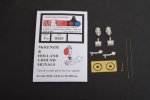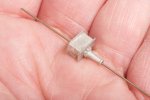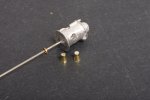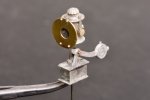Ground frame
New
RichardG
Western Thunderer

I bought this kit a few years ago. If it included some wire to make the details then this is lost. I have an etch and instructions.

With two true right-angles folded into the etch, the fourth side does not line up. The external corners on the top do not meet up either.

I broke off the fourth side and put it back in the right place, and added scraps of wire to build up the wonky corners. So there are seven parts in the frame here, not two as the designer intended.
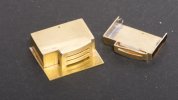
Then I realised the levers are rather intricate to assemble. A two-lever frame will be correct for the location on my layout, and I certainly don’t want to make two levers with no purpose.
So I cut the model into two pieces to turn it into a two-lever frame. It would be daft to try to re-use the second side because it didn’t fit properly the first time round. So I added a new side oversize and trimmed it later.

It will be wise to make the levers movable in case of inquisite fingers. I can solder them both onto the pivot rod, or maybe squeeze in a spring or some pvc tubing between them after painting.

So, a simplified model. I have my doubts about the longevity of the levers. Nickel silver would be stiffer.

The marks from the wandering drill bit will disappear after I lower this into the ground
 .
.There are just 15 parts in this model; eight from the kit and seven from me.

